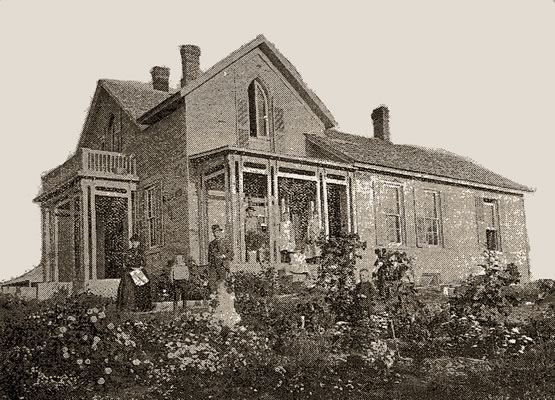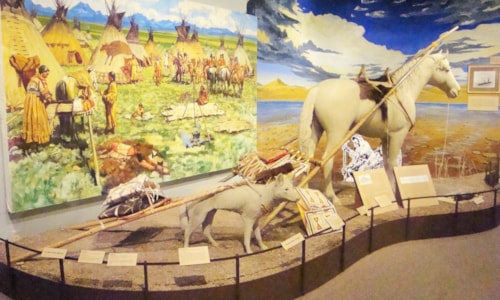Elling House

From the vindictive to the gruesome to the benign, it should come as no surprise that Virginia City has its fair share of ghost stories. And it is always eerie to hear of ghostly presences, even when the dead are generous and gracious hosts.
Mary Elling

For years Mary Elling had been a much-loved resident of Virginia City, and when she died in 1924, she left a hole in her beloved community. Born in 1848, Mary, then Mary Cooley, moved to Virginia City with her parents in the 1860s. She met Henry Elling in Virginia City and the two married in 1870. Henry Elling was a German immigrant who had moved to Virginia City in 1864. He quickly found success as a merchant, invested in mining, property, and livestock, had an electrical franchise, and became a prosperous banker. By the 1870s, Henry was well established as one of the wealthiest men in state. The Ellings had ten children, seven of who survived to adulthood. They built their house—a mansion, really, by Virginia City standards—in 1876.
When Henry died in 1900, he left behind a 3-million-dollar fortune, which Mary promptly put to good use. She donated the funds for the building of the new St Paul’s Episcopal Church, and she nearly doubled the size of the Elling mansion, adding a massive ballroom, sitting room, smoking room, maid’s quarters and extra kitchen. Already well-known, Mary quickly established her name as an extraordinary host. For the next two decades the house was alive with parties, music, and festivities. All classes of people, from the richest to the poorest, were welcomed by Mary. When she died on Christmas Eve, 1924, The Madisonian, Virginia City’s newspaper lamented:
The flowers were many and beautiful, but not more beautiful than the face that rested so peacefully among them. Beautiful in life, beautiful in death [....] Thus would we leave her, and in memory keep her, as sweetly reposing among beautiful and fragrant flowers. (The Madisonian, January 2, 1925)
The Haunting of Elling House
Over the decades, the Elling House changed hands and, like so much of Virginia City, fell into disrepair. It eventually came under the care of John Ellingsen, who served as the curator of Virginia city since 1972. Ellingsen began to notice that more and more of the windows of the old house were being broken. What was strange though, was that all of the shattered glass was outside the house—someone was breaking the windows from the inside. John decided that someone must be getting into the house through the ballroom and determined to board up the ballroom door. But as he went to pound the first nail, something grabbed his wrist. Something was stopping from boarding up the door. Shocked, John sat back. After a few minutes he tried again, but the same thing happened, he simply could not move the hammer. Something did not want him to block that door! John had had enough. He grabbed his supplies and left. It would be many years before he ventured into the Elling House again.
The house changed hands again. At one point, work was begun renovating the ballroom. One day, the couple doing the renovation left several books of wallpaper samples in the ballroom as they went to run errands. When they returned, they found one of the big books open to a floral pattern. They closed the book and carried on with their work. The next day, the found the same book opened to the same flowered pattern. This raised their suspicions, so they made a point of closing the book and putting it at the bottom of the stack. When they returned, they once again found the same book open to the same floral sample.
When the layers of paint and wallpaper were finally peeled from the ballroom walls, they discovered that the original wallpaper was exactly the same as the floral pattern.
It would seem that Mary Elling is still hard at work, making sure that her beautiful ballroom remains a welcoming and festive venue.










